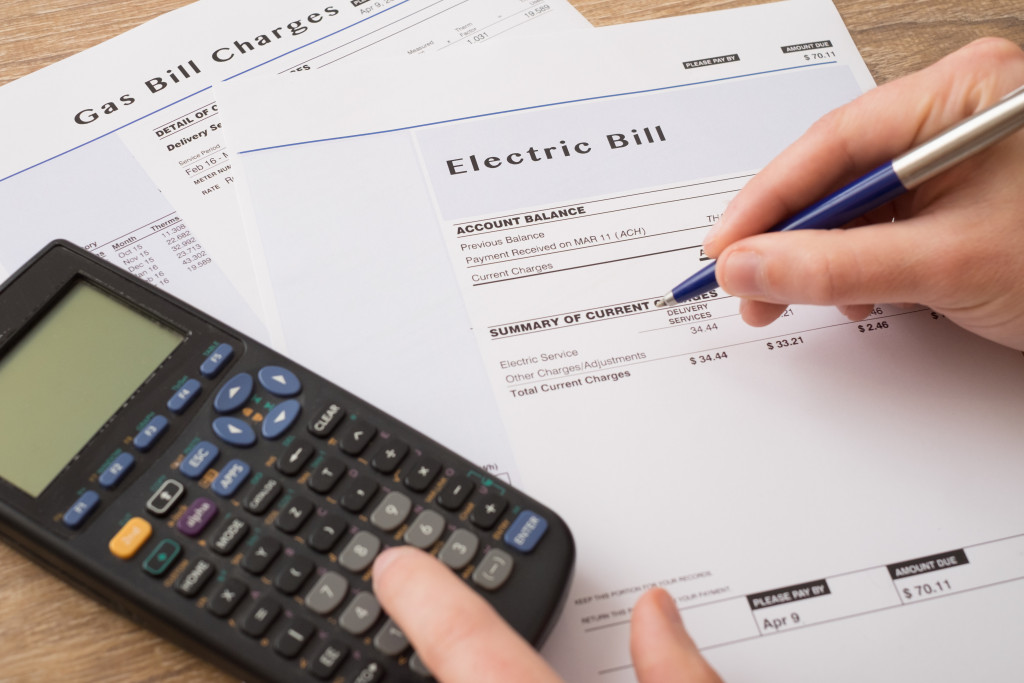Almost every modern perk requires the grid. Electricity flows from power stations to homes — powering lights, charging phones, and allowing the use of pretty much every appliance and device in a home. Municipal water flows to the taps, providing homes with water for drinking, showering, cleaning, and gardening.
Even vehicles rely on a smaller grid of gasoline stations for fuel. Reliance on the grid costs money — however, you can easily limit your dependence without shelling out a lot of money.
Water
Free-flowing tap water is a mark of every modern society. While municipal water might be one of the least expensive utilities, there’s no reason not to have backups in case of emergencies. Groundwater is particularly safe, requiring little to no treatment or disinfection. Most states require water and drilling permits before you can build a well. You can dig a 30-foot well in Utah without a permit, but you’ll need one if you want to reach groundwater. Proper storage tanks and water well pumps can provide clean and adequate water to a home.
Drilling a well can cost upwards of $3,000. Unless you have a farm, it might be too expensive to get a well. For irrigation, groundwater can be cheaper than municipal water. The cost of municipal water exponentially rises for farms with hundreds of acres. If you don’t own a farm, a simple laundry to landscape greywater system (that costs around $700) should be enough to cut your municipal water consumption. A greywater system stores and reuses water.
Laundry water is safe to use in cleaning the car or watering the lawn. If you use sodium-free and boron-free soap, you can even use laundry water for your vegetable garden.
Electricity
Almost half the cost of your monthly utility bills goes to electricity. Monthly costs can be as low as $80 in Utah to a high of $160 in Connecticut (or $165 in Hawaii). Insulation and updated appliances can make your home more energy-efficient — however, you’ll need solar power if you want to go fully independent. Solar homes produce their own electricity. Most homes stay connected to the grid, providing excess electricity in the morning as a buffer, then using it up during the night.

The average American home consumes close to 900 kWh of electricity in a month. An 8-kW solar power system produces 1,000 kWh a month — enough to power a 4-bedroom home with a bit of extra for the grid. You can get an 8-KW solar power kit for as low as $10,000. Federal solar incentives cut another $2600 (26 percent) of the costs, leaving a final purchase price of around $7,400.
Installing the panels is what costs a lot of money, so learn a bit of carpentry or have knowledgeable relatives help you out. Pay for your panels outright or use a 10-year loan to finance them. The $70 monthly premiums can be covered with the monthly savings you’ll get on your electricity bills. Modern solar panel systems are more robust than their earlier counterparts.
A modern system can last for more than 45 years with little degradation to efficiency. Most solar manufacturers guarantee a 90 percent efficiency for the first 10 years, and an 80 percent efficiency for the first 25. Solar panels will also raise the property value of your home by as high as 10 percent. In New Jersey, solar panels can increase a home’s value by more than $30,000.
Gasoline
The average American family spends around $250 a month on gasoline — more so now with gas prices skyrocketing. As states go green and carbon emissions get penalized, expect gasoline prices to go further up. California is already proposing a carbon tax that could add another $0.20 for every gallon of gas. One way to avoid sky-high gas prices is to use electric vehicles.
Modern electric vehicles perform better than standard cars in multiple metrics like safety, comfort, and ease of driving. They also beat gas-guzzlers in acceleration, maneuverability, and torque. Mileage isn’t an issue as the latest electric cars can run for 300 miles without issue. While you’ll be shelling out an extra $5,000-$10,000 for a mid-size electric car, you’ll easily recoup the money on savings on fuel in just 5 years. If you went solar, you’ll also be charging your car with clean electricity, making it a legitimate carbon neutral (or negative) vehicle.
Save hundreds of dollars on monthly bills by cutting your dependence on the grid. Source water from wells, get power from the sun and use electricity to fuel your cars.







